
Street Smart: The Rise of Cities and the Fall of Cars
by
Samuel I. Schwartz
Published 17 Aug 2015
Despite all this, I didn’t entirely trust that I’d discovered anything useful about the future of transportation. I knew I felt good about walking and biking. But I also knew that I was supposed to feel good. Much of what I read now professionally is pro-cycling and pro-walking, sometimes embarrassingly so. Some of the most frequently published writers on the subject of smart transportation are practically messianic, and heresy, such as suggesting that privately owned automobiles might have any place at all in some ideal future transportation infrastructure, is severely punished. Support for cyclists and pedestrians was in tune with my political sympathies, my social contacts, and even my bank account, since my company is frequently hired by clients interested in transforming the world into a less automobile-centric place.
…
As the political prediction machine Nate Silver of 538.com tweeted in 2012, “If a place has sidewalks, it votes Democratic.” It’s not totally obvious whether people vote a certain way because of where they live, or whether they move to places where everyone votes the way they do. What is obvious though is that all the elements of a Street Smart transportation system depend on density. At first glance, this would appear to be a giant advantage for a Street Smart future, since every demographic indicator shows that America and the world are headed for a much more urbanized future. Between 1970 and 2000, the world’s urban areas grew by about 22,300 square miles, but in the three decades between 2000 and 2030, they are expected to grow by 590,000 square miles, and house nearly one-and-a-half billion more people than today.
…
However, the exceptions to this rule are the really interesting ones. Two of the biggest cities that voted for Mitt Romney in the 2012 presidential election were Salt Lake City and Oklahoma City. Despite that, as we’ve seen, both cities recognize the critical importance of building the elements of a Street Smart transportation system, from walkable downtowns to multimodal grids. Ideologically driven politicians and think tanks can fulminate all they want about the creeping dangers of European-style urbanism in the land of the free and the home of the brave. But mayors and city managers all over the country, whatever their political affiliations, can’t afford to see transportation policies in those terms.

Augmented: Life in the Smart Lane
by
Brett King
Published 5 May 2016
Tools like decision infrastructure for collaborative operational planning (DICOP), developed by DARPA, use causal models and influence diagram graphics to graphically show how various assumptions and resources affect planning. Visualisations and simulations utilising 3D models allow city managers and planners to understand complex relationships and conduct “what if” explorations such as, “What if we deleted new parking structures and put in public transit instead?” Smart Transportation Systems One of the most dramatic paybacks from investment in smart city technologies can be the reduction of time spent in cars, with resultant frustration, costs and CO2 emissions. Intelligent traffic management systems can manage signal lights, detours and traffic flows. Holland has implemented such a system, called TrafficLink, for its Amsterdam Smart City (ASC).
…
Since its implementation, the system has reduced vehicle loss hours in Amsterdam by 10 per cent. Figure 11.2: Amsterdam’s TrafficLink system (Credit: Rijkswaterstaat Verkeerscentrale) In Melbourne, Australia, the use of boom gates at railway crossings is an example of existing infrastructure that dramatically limits the ability of a city to implement smart transportation. At some crossings in the city, boom gates obstruct primary arterial feeder roads 70 to 80 per cent of the time during peak hours, adding a collective 16 to 20 hours of driving time each day to commuters. It has been estimated that removing such obstructions would return AUD$6 for every AUD$1 of investment in improvements in road infrastructure.
…
As buses and trains will be driven by AIs, they will be able to work longer hours without fatigue and overtime consideration. Autonomous, electric transportation systems and vehicles will also be much cheaper to maintain and operate. The costs of the driver will have been eliminated, and electric motors will require far less maintenance than typical combustion engines and the associated drivetrain. Smart transportation networks in large urban centres will work like a living organism. Small autonomous carts and pods will drive around campuses and shopping areas feeding people to ridesharing locations or public transport stations. Public transportation will be optimised around demand, events, weather and other considerations, all reactive in real time and dispatched by AI controllers.
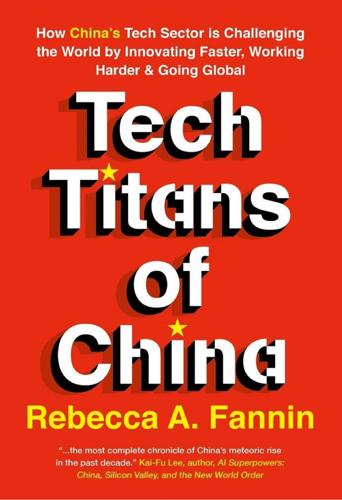
Tech Titans of China: How China's Tech Sector Is Challenging the World by Innovating Faster, Working Harder, and Going Global
by
Rebecca Fannin
Published 2 Sep 2019
Another system, Didi’s so-called Traffic Brain, integrates data from roads and maps, analyzes it, and then controls traffic within cities by timing traffic signals and adjusting reversible lanes. Didi has launched these smart-transport technologies in 20 Chinese cities to help control traffic flow and ease congestion. What else does this transport brainpower do? Didi has developed a global R&D network of big data and intelligent-driving technologies and opened a research lab in Mountain View and an AI lab in Beijing. The Chinese company also has formed innovation partnerships with Stanford University and the University of Michigan to accelerate development of smart transport. Didi vs. Uber It’s interesting to compare and contrast Didi in China with Uber in the United States.
…
The three Chinese high-tech titans are each pursuing investments beyond national borders and original business sectors. Let’s look at the strategies of each of these titans, in order of their place in the BAT league. Buffing Up Baidu Baidu is betting its future squarely on diversifying beyond search and into artificial intelligence technologies for self-driving, smart transport and voice-assisted smart home devices. In a major restructuring of its China business a few years ago, Baidu ditched several costly peripheral, cash-burning online businesses in food delivery services, mobile games, online travel, web shopping, and health care that were losing a battle with hard-charging Tencent and Alibaba.
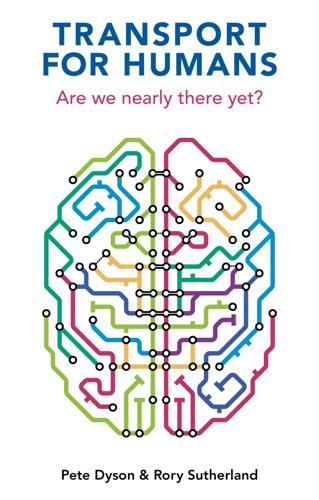
Transport for Humans: Are We Nearly There Yet?
by
Pete Dyson
and
Rory Sutherland
Published 15 Jan 2021
Experiences during Covid-19 are even tougher and more complex: see I. Eskytė, A. Lawson, M. Orchard and E. Andrews. 2020. Out on the streets – crisis, opportunity and disabled people in the era of Covid-19: reflections from the UK. Alter 14(4), 329–336. 15 L. Laker. 2020. The way we design transport is not equal. Smart Transport 6(May), 58–63 (https://smarttransportpub.blob.core.windows.net/web/1/root/insight-inclusivity-ongoing-series-physical-disability-laura-laker-low-res-pdf.pdf). 16 L. Sloman, S. Cairns, A. Green, L. Hopkinson and F. Perrotta. 2019. CWIS Active Travel Investment Models: model structure and evidence base.
…
In practice, though, we tend to use all this information to decide where and when to travel, not simply to purchase a ticket that matches a list of already defined criteria. When websites include a button that expands a search to show the cheapest days and times to travel, this has a large effect on the behaviour of the most price-sensitive customers. A smart transport provider could adapt the way options are presented to us to make the most of the way we make trade offs between our preferences. * * * 1 Chartered Institute of Personnel and Development. 2009. PESTLE analysis history and application. CIPD website, 21 October (www.cipd.co.uk/subjects/corpstrtgy/general/pestle-analysis.html). 2 Rail Delivery Group. 2019.
…
Street Blog Chicago, 23 June (https://chi.streetsblog.org/2018/06/06/oboi-reed-transportation-planning-needs-to-become-less-stale-pale-and-male/). 10 Aviation Job Search. 2020. Occupational gender differences in the aviation industry. Industry News blog, 17 February (https://blog.aviationjobsearch.com/occupational-gender-differences-in-the-aviation-industry/). 11 L. Laker. 2020. Diversity in transport needs to accelerate. Smart Transport Magazine, issue 7 (August), pp. 39–43 (https://bit.ly/3w4X7AT). 12 J. De Henau and S. Himmelweit. 2021. A care-led recovery from COVID-19: investing in high-quality care to stimulate and rebalance the economy. Feminist Economics 27(1–2), 453–469. 13 Department for Transport. 2020.
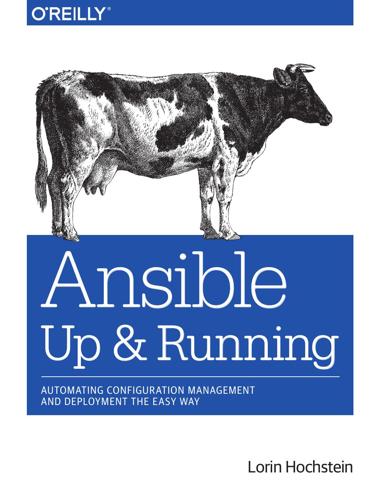
Ansible: Up and Running: Automating Configuration Management and Deployment the Easy Way
by
Lorin Hochstein
Published 8 Dec 2014
ansible_connection Ansible supports multiple transports, which are mechanisms that Ansible uses to connect to the host. The default transport, smart, will check to see if the locally installed SSH client supports a feature called ControlPersist. If the SSH client supports ControlPersist, Ansible will use the local SSH client. If the SSH client doesn’t support ControlPersist, then the smart transport will fall back to using a Python-based SSH client library called paramiko. ansible_shell_type Ansible works by making SSH connections to remote machines and then invoking scripts. By default, Ansible assumes that the remote shell is the Bourne shell located at /bin/sh, and will generate the appropriate command-line parameters that work with Bourne shell.
…
scalability, Ansible Scales Down scaling down, Ansible Scales Down scp_if_ssh connection, Default Settings script modules, Running Custom Python Scripts in the Context of the Application, Using the Script Module Instead of Writing Your Own secret variables, Variables and Secret Variables-Variables and Secret Variables security group rule parameters, Security Groupscidr_ip, Security Groups from_port, Security Groups proto, Security Groups to_port, Security Groups security groups, Auto-Generated Groups, Security Groups, Security Group Ports sensitive data, encrypting, Encrypting Sensitive Data with Vault-Encrypting Sensitive Data with Vault sequences, Lists serial clause, Running on One Host at a Time server(s)custom modules for checking reachability of, Example: Checking That We Can Reach a Remote Server for testing, Setting Up a Server for Testing-Simplifying with the ansible.cfg File inventory of, Inventory: Describing Your Servers-group_by viewing all facts associated with, Viewing All Facts Associated with a Server waiting for, in EC2, Waiting for the Server to Come Up server_name variable, Generating the Nginx Configuration Template service, Supervisor: The Process Manager service configuration files, Setting Service Configuration Files service discovery mechanism, Mezzanine service module, Modules setup module, Viewing a Subset of Facts set_fact, Using set_fact to Define a New Variable set_fs_attributes_if_different method, add_file_common_args shell module, Registering Variables, Custom Modules shorthand input, Bash modules, Implementing the Module in Bash simplejson library, Nothing to Install on the Remote Hosts size return value, The Assert Module smart transport, ansible_connection SoftLayer, Setting Up a Server for Testing, Amazon EC2 software, development mode vs. production mode, Why Deploying to Production Is Complicated-Supervisor: The Process Manager SQL databases, Introduction SSHagent forwarding, Agent Forwarding-Sudo and Agent Forwarding debugging, Debugging SSH Issues features of, SSH-Host Keys host keys, Host Keys-Host Keys native, Native SSH ssh-agent, SSH Agent-Linux, Mac OS X SSH key pairs, EC2 Key Pairs SSH multiplexing, SSH Multiplexing and ControlPersist-SSH Multiplexing Options in Ansible, SSH Multiplexing and ControlPersistControlMaster, SSH Multiplexing Options in Ansible ControlPath, SSH Multiplexing Options in Ansible ControlPersist, SSH Multiplexing Options in Ansible manually enabling, Manually Enabling SSH Multiplexing options in Ansible, SSH Multiplexing Options in Ansible ssh-agent program, Telling Ansible About Your Test Server ssh_args connection, Default Settings ssh_connectionscontrol_path, Default Settings pipelining, Default Settings scp_if_ssh, Default Settings ssh_args, Default Settings SSL, TLS vs., Getting Fancier: TLS Support staging environments, Example: Deploying a Django App stale data, Fact Caching start at task, Start-at-Task start of file, YAML syntax, Start of File stat module return values, The Assert Module state, dict instance, Adding a New Instance to a Group state_code, Adding a New Instance to a Group static assets, Nginx: The Web Server step flag, Limiting Which Tasks Run strings, YAML syntax, Strings su configuration, Default Settings subsets, fact, Viewing a Subset of Facts Sudo, Sudo and Agent Forwarding sudo clause, Adding the Sudo Clause to a Task sudo configuration, Default Settings sudo setting, Plays sudo_exe configuration, Default Settings sudo_flags configuration, Default Settings sudo_user configuration, Default Settings Supervisor, Setting Service Configuration Filesas Mezzanine process manager, Supervisor: The Process Manager Docker alternative to, Mezzanine supports_check_mode initializer argument, AnsibleModule Initializer Parameters surround_by_quote function, Writing Your Own Filter su_exe configuration, Default Settings su_flag configuration, Default Settings su_user configuration, Default Settings syncdb command, Running django-manage Commands syntax check, Syntax Check syntax, Ansible, Easy-to-Read Syntax syslog_facility configuration, Default Settings system-level packages, Using Iteration (with_items) to Install Multiple Packages system_warnings configuration, Default Settings T tag groups, Auto-Generated Groups tag(s)added to task/play for debugging, Tags applying to existing EC2 resources, Applying Tags to Existing Resources defining EC2 dynamic groups with, Defining Dynamic Groups with Tags-Nicer Group Names group names for, Nicer Group Names in EC2, Tags tagged_instances module, Adding a New Instance to a Group task queues, Introduction task(s), How Ansible Works, Plays, Putting It All Togetheradding sudo clause, Adding the Sudo Clause to a Task changed_when and failed_when clauses, Dealing with Badly Behaved Commands: changed_when and failed_when-Dealing with Badly Behaved Commands: changed_when and failed_when complex arguments in, Complex Arguments in Tasks: A Brief Digression-Complex Arguments in Tasks: A Brief Digression in playbooks, Tasks limiting, for debugging, Limiting Which Tasks Run listing in playbook, Listing Tasks in a Playbook running on control machine, Running a Task on the Control Machine running on machine other than host, Running a Task on a Machine Other Than the Host running on one host at a time, Running on One Host at a Time running only once, Running Only Once Taste Test: Puppet, Chef, Salt, Ansible (books), Is Ansible Too Simple?
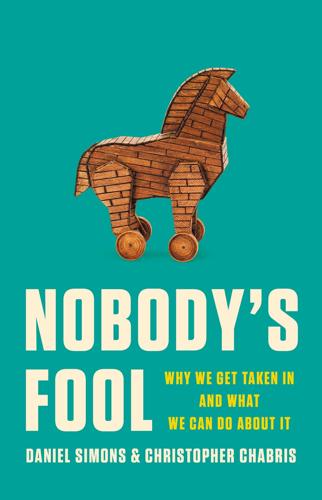
Nobody's Fool: Why We Get Taken in and What We Can Do About It
by
Daniel Simons
and
Christopher Chabris
Published 10 Jul 2023
The US Department of Transportation makes regular reports to Congress that estimate the total number of vehicle miles traveled in the country that year and predict road traffic up to twenty years into the future. Year after year, the reports have forecast steady growth in traffic volume. Yet that growth tapered off in the late 1990s, and traffic volume actually declined slightly in the early 2000s. Eric Sundquist, the director of the University of Wisconsin’s State Smart Transportation Initiative, analyzed these forecasts in 2013 and discovered that the models had been created based on trends that held true in the 1980s and hadn’t been updated since. The financial and societal stakes of using such outdated models are high. Underpredict future traffic, and roads will be clogged and crumbling.
…
Department of Transportation “Status of the Nation’s Highways, Bridges and Transit: Condition and Performance” reports are online [https://www.transit.dot.gov/research-innovation/status-nations-highways-bridges-and-transit-condition-and-performance]. Sundquist’s analysis: E. Sundquist, “New Travel Demand Projections Are Due from U.S. DOT: Will They Be Accurate this Time?,” State Smart Transportation Initiative, December 16, 2013 [https://ssti.us/2013/12/16/new-travel-demand-projections-are-due-from-u-s-dot-will-they-be-accurate-this-time/]. Additional discussion: A. Gelman, “The Commissar for Traffic Presents the Latest Five-Year Plan,” Statistical Modeling, Causal Inference, and Social Science, January 21, 2014 [https://statmodeling.stat.columbia.edu/2014/01/21/commissar-traffic-presents-latest-five-year-plan/]; C.
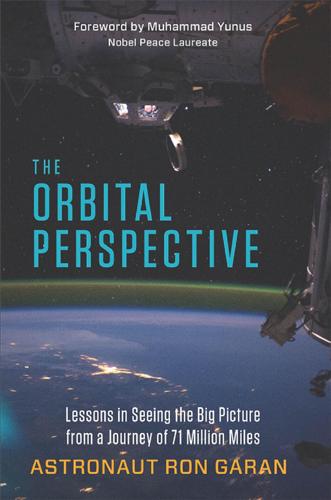
The Orbital Perspective: Lessons in Seeing the Big Picture From a Journey of 71 Million Miles
by
Astronaut Ron Garan
and
Muhammad Yunus
Published 2 Feb 2015
Pulling back to look at the situation from the orbital perspective, though, reveals that more than 1.2 million people are killed in traffic accidents each year—╉the equivalent of wiping out the entire population of a city the size of Dallas, Kampala, or Prague—╉and would view this situation as unacceptable. Such perspective would lead us to take a wider focus and to look for ways to incorporate information technology in the design of smart transportation systems that prevent cars from crashing in the first place.7 The orbital perspective also would take account of environmental and geopolitical issues, in addition to safety concerns. If by working together as a global community we can design an infrastructure that enables cars on the road to know the location of all other vehicles on the road, to know the road conditions, to employ sensors that react to any circumstance thousands of times faster than a human, we could, in effect, create a transportation system in which cars do not crash into each other or into anything else.

50 Future Ideas You Really Need to Know
by
Richard Watson
Published 5 Nov 2013
This reduces overall diversity, and essential services start to suffer because people working in the service support professions cannot afford to live in certain areas. Love them or loathe them, it seems fairly certain that cities are here to stay and that they will get much bigger in the future. They will also get much smarter, hopefully in terms of the people living in them, but certainly in terms of the way that smart transport and infrastructure are deployed across them, linking individual elements together to create intelligent and to some extent self-aware systems (see Chapter 13). the condensed idea More people in big cities timeline 1800 3 percent of the world’s people live in cities 1950s 83 cities worldwide with populations over 1 million 2000 Population of greater Tokyo area exceeds 35 million 2007 468 cities with populations over 1 million 2008 Over 50 percent of humanity lives an urban existence 2018 Detroit declared a “hollow city” with population falling 20 percent per year 2030 60 percent of the world’s people live in cities 2050 Half of Africa’s population live in cities 12 Local energy networks Local power, the idea of producing and distributing electricity in the future from local sources or networks, represents a radical shift in the balance of power away from the fossil fuel and nuclear-run power plants that currently dominate the power industry.
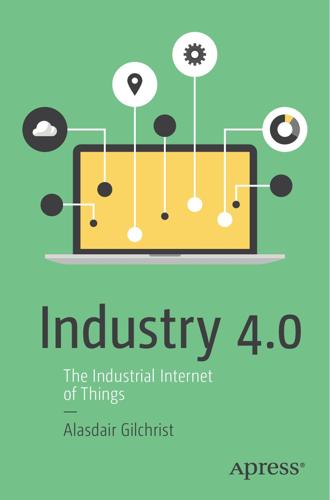
Industry 4.0: The Industrial Internet of Things
by
Alasdair Gilchrist
Published 27 Jun 2016
Furthermore, in some high-technology manufacturing, the number of employees involved in non-manufacturing roles, such as R&D, HR, office support, and IT, make up the large majority of employees. Industry 4.0 places high importance on the Internet of services, where manufacturers can create or consume available services within their value chain. These services, such as inventory control, logistics, and smart transportation, will reduce costs, improve efficiency, and ultimately productivity. A critical challenge for manufacturers will be to approach the era of digital manufacturing in a more pragmatic way. Certainly manufacturers involved in heavily labor-intensive sectors such as jewelry, textiles and toys, will stay on the lowwage path.
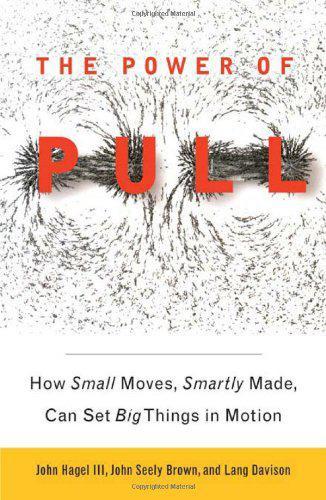
The Power of Pull: How Small Moves, Smartly Made, Can Set Big Things in Motion
by
John Hagel Iii
and
John Seely Brown
Published 12 Apr 2010
It’s simply Jack, a few twenty-somethings who either code software or perform analysis (for instance, on how many cars it takes to match the emissions of one container ship), a bunch of donors (most of them entrepreneurs), and a handful of websites that help support and organize a “guerrilla warfare” effort that simply wouldn’t be possible without the digital infrastructure. Jack uses social media to mobilize not just donors but also government officials, journalists, Facebook supporters, and NGO staffers behind particular causes, such as the “cash-for-clunkers” initiative he co-organized in the summer of 2009 and the “smart transportation” initiative aimed at getting the New York City taxi fleet converted to hybrid vehicles. The idea for cash for clunkers—in which the U.S. government offered citizens money to trade in their gas guzzlers for more fuel-efficient models—started off as a white paper written by Hidary and a colleague at the Center for American Progress utilizing data from the American Council for an Energy-Efficient Economy, which they then managed to get read by key staffers and influencers on Capitol Hill.

Money: The Unauthorized Biography
by
Felix Martin
Published 5 Jun 2013
Eventually, Bender is forced to resort to “what he used to do while the possessor of empty pockets. He began assuming false identities, such as engineer, medical officer, or tenor … to get a room.”25 The million roubles he lusted after for so long have turned out to be virtually useless—since in the command economy, there is virtually nothing for them to buy. Everything he dreamt of—smart transport, luxurious accommodation, fine food—is allocated by the Party and the Plan. Ilf and Petrov’s frustrated hero was a victim of the second generic strategy for fixing money’s failings: the strategy of containment. In the period of so-called “War Communism” immediately following the socialist revolution in Russia, the young Soviet Union had attempted the more radical Spartan solution of abolishing money completely.26 “In a socialist society,” the Commissar for Finance had explained in a bashful apology made to the inaugural All-Russian Congress of the Council of the National Economy in 1918, “finance is not supposed to exist, and therefore I beg to be excused for its existence and for my own appearance here.”27 The new regime had lost no time in working to spare the Commissar any further blushes.
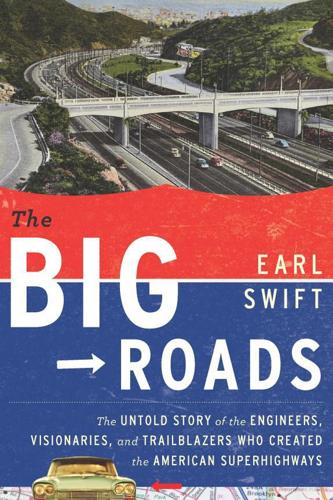
The Big Roads: The Untold Story of the Engineers, Visionaries, and Trailblazers Who Created the American Superhighways
by
Earl Swift
Published 8 Jun 2011
On some projects, old and new approaches achieve identical standards. On others, the differences are likely to be invisible. A highway through mountains might have a thinner bed of concrete where it rests on bedrock, for instance. A worn road might be patched, rather than reconstructed. In Pennsylvania, officials are beating the drum for "Smart Transportation," a program that calls on engineers to reexamine all of their assumptions about road building. "The old style was that if we had a road that was congested, we'd project the traffic out twenty-five years and add lanes to accommodate that future traffic," said Allen D. Biehler, the state's transportation secretary.

Click Here to Kill Everybody: Security and Survival in a Hyper-Connected World
by
Bruce Schneier
Published 3 Sep 2018
In workplaces, many of those same smart devices are networked together with surveillance cameras, sensors that detect customer movements, and everything else. Smart systems in buildings will provide more efficient lighting, elevator operation, climate control, and other services. Cities are starting to embed smart sensors in roads, streetlights, and sidewalk squares, as well as smart energy grids and smart transportation networks. Soon, cities will be able to control your appliances and other home devices to optimize energy use. Networks of smart driverless cars will automatically route themselves to where they’re needed, minimizing energy use in the process. Sensors and controls in the streets will better regulate traffic, speed up both police and medical response times, and automatically report road flooding.
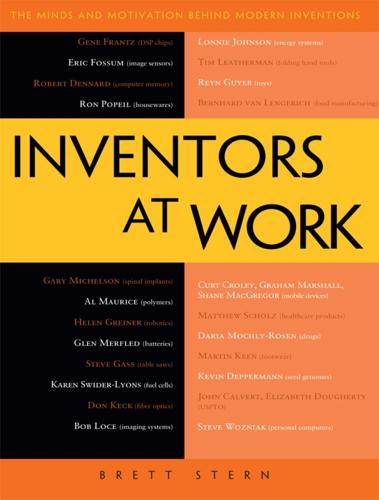
Inventors at Work: The Minds and Motivation Behind Modern Inventions
by
Brett Stern
Published 14 Oct 2012
For years, Xerox was primarily committed to the development of printer technology. But a few years ago, we switched our focus from printer technology to business services. “Business services” can mean many different things. It can mean helping healthcare providers and insurers manage information, management of smart transportation networks, and aiding in processing information in the education system. Stating it simply, we changed from operating primarily in one field with its technology needs to many fields with more diverse needs. We researchers were given a great deal of leeway to invent in these new service areas and our managers challenged us to show what we could do.

AI 2041: Ten Visions for Our Future
by
Kai-Fu Lee
and
Qiufan Chen
Published 13 Sep 2021
The landscapes that came up the most frequently were primarily replicas of real-life cities, spanning the Middle East to East Asia: Abu Dhabi Satellite City, Hyderabad, Bangkok, the Singaporean man-made island, the Greater Bay Area of Guangdong-Hong Kong-Macao, Shanghai Lingang, Xiong’an New Area, Chiba of Japan—places that, until now, Chamal had only read about online. One day Chamal received instructions to complete a mission on the Singaporean man-made island. A disturbance on the ocean floor in North Java had triggered a tsunami and the infrasound completely paralyzed the island’s automated smart transportation system. A ten-meter tsunami would hit the island in exactly six minutes. Over a hundred dysfunctional autonomous cars and their passengers were careening down the roadway, likely to crash or, like sitting ducks, be washed away. Chamal and the other racers were instructed to seize the wheels of these vehicles, turn on manual control before more accidents could happen, and help connect the cars to the emergency network infrastructure.
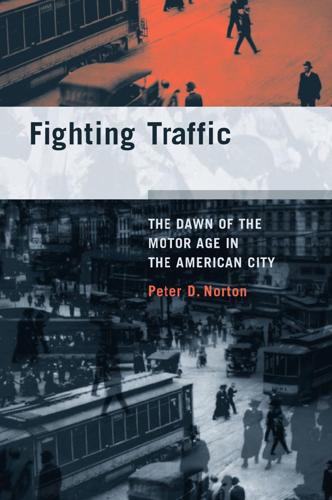
Fighting Traffic: The Dawn of the Motor Age in the American City
by
Peter D. Norton
Published 15 Jan 2008
The Kansas City Railways used pictures to show newspaper readers that “one street car has the carrying capacity of many automobiles and occupies very little of the pavement space” and urged them to “remedy” Traffic Efficiency versus Motor Freedom 159 congestion by riding street cars and buses.58 At cinemas in Birmingham, Alabama, audiences saw a short movie distributed by the local street railway, “Mrs. Birmingham Goes Shopping.” By making fun of the frustration of motorists fighting traffic and looking for a place to park, it cast the streetcar as the smart transportation mode for modern shoppers.59 Like the railways, streetcar manufacturers began to spread the traffic control word beyond the Chamber of Commerce, conference rooms and city engineering offices. Westinghouse bought full-page advertisements in national magazines, including the Saturday Evening Post, Forbes, and Nation’s Business.
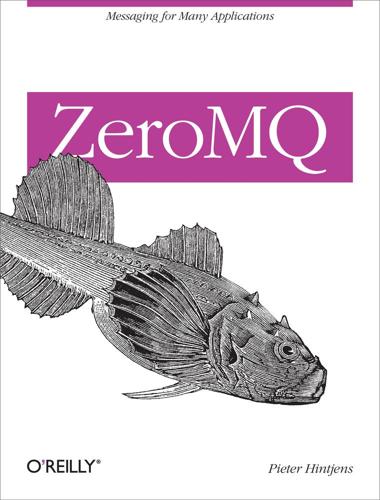
ZeroMQ
by
Pieter Hintjens
Published 12 Mar 2013
Crazy, Beautiful, and Easy You need a goal that’s crazy and simple enough to get people out of bed in the morning. Your community has to attract the very best people, and that demands something special. With ØMQ, we said we were going to make “the Fastest. Messaging. Ever,” which qualifies as a good motivator. If we’d said we were going to make “a smart transport layer that’ll connect your moving pieces cheaply and flexibly across your enterprise,” we’d have failed. Then your work must be beautiful, immediately useful, and attractive. Your contributors are users who want to explore just a little beyond where they are now. Make it simple, elegant, and brutally clean.

Cities Under Siege: The New Military Urbanism
by
Stephen Graham
Published 30 Oct 2009
With the possibility of ubiquitous road-pricing in the UK and EU being actively considered, the tracking of entire societies’ patterns of mobility seems set to radically intensify. 9.8 The Boundaries of the ‘Lower Manhattan Security Initiative’ and the ‘Ring of Steel’, established around London’s financial centre to stop IRA bombers in the 1990s. Similar efforts to build security tracking into ‘smart’ transport projects are underway in the US. In 2002, as we saw in Chapter 4, the well-established E-ZPass system, which facilitates access to faster lanes on highways in the US and Canada, was extended as a means of biometrically checking people crossing the border.121 Also in 2002, ITS America, a group of US corporations which designs and builds ‘intelligent transport’ equipment, set up its own homeland security task force to oversee the computerization of transport in ways that supported increased securitization of US urban life.122 In 2007 New York City announced a $100 million plan to turn Lower Manhattan into a ‘ring of steel’ – a much more advanced version of what was built around London’s financial centre in response to IRA bombings there in the 1990s (Figure 9.8).
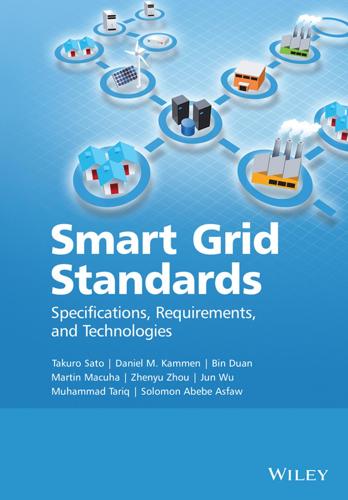
Smart Grid Standards
by
Takuro Sato
Published 17 Nov 2015
In 2009, the Presidential Committee on Green Growth issued the guideline, Building an Advanced Green Country, which specifies the contents of the South Korea Smart Grid. In August 2009, the Korea Smart Grid Institute (KSGI) was launched to promote the development of the Smart Grid in South Korea. KSGI issued Korea’s Smart Grid Roadmap, which specifies five sectors for implementing the Smart Grid: smart power grid, smart consumer, smart transportation, smart renewable, and smart electricity service [55]. In the first stage (2010–2012), the implementation direction was to construct and operate the Smart Grid test bed in pilot projects. In the second stage (2012–2020), the implementation direction is to expand the Smart Grid into metropolitan areas.